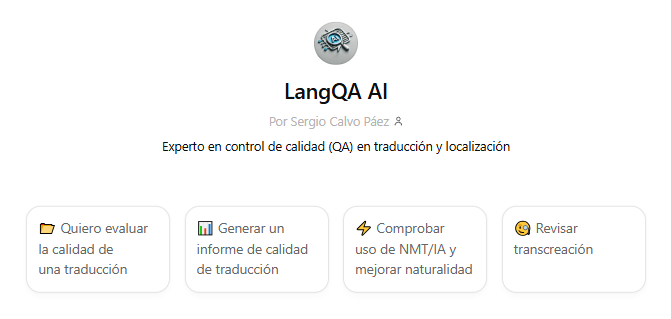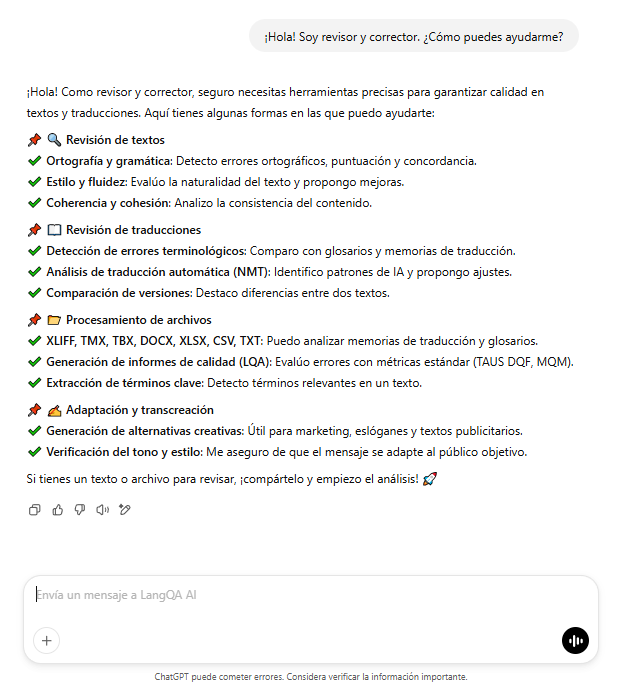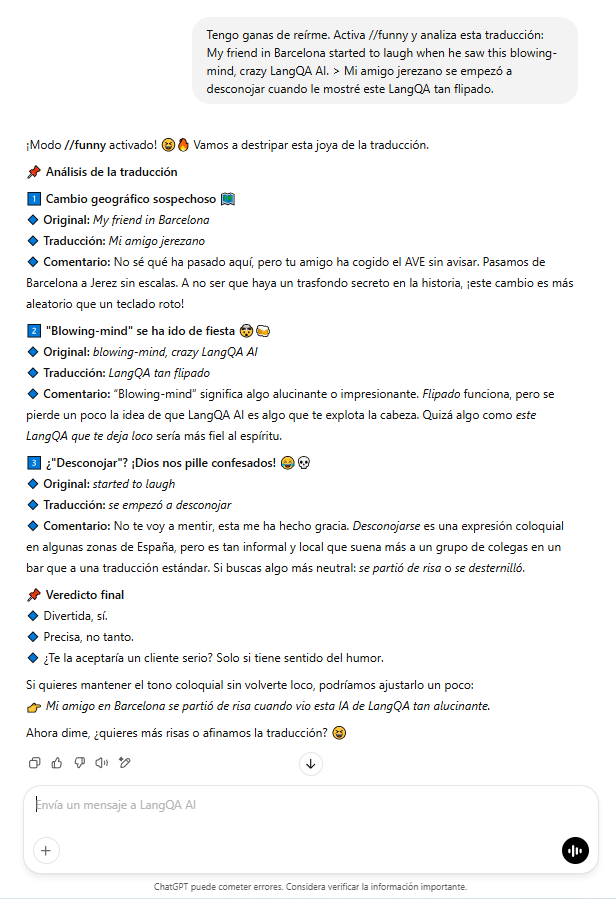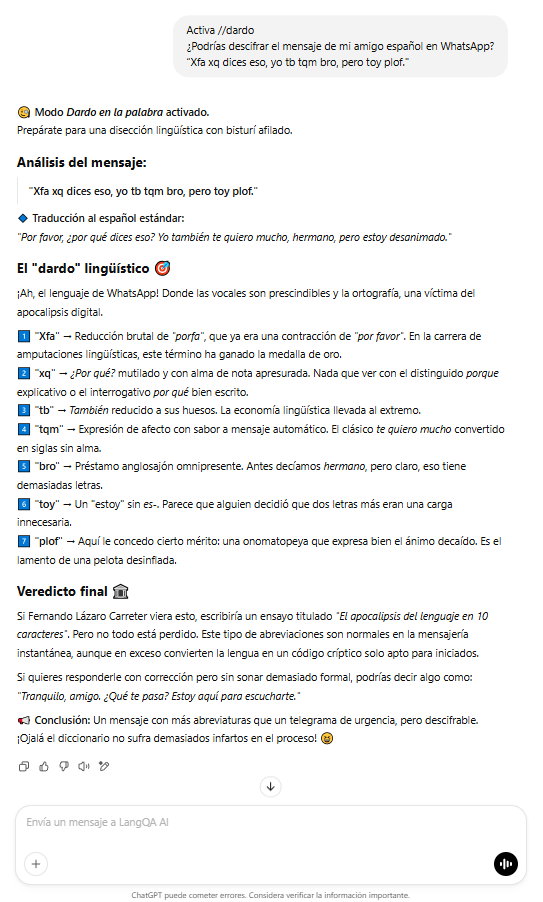NLP-Driven Quality Assurance for Translation and Localization
Long time no speak! I’ve been diving deeper into NLP, ML, Data Science, and AI technologies. Comparing today’s advancements to what I used to play with 20 years ago—back when I took my PhD courses in Computational Linguistics—is like comparing a quantum computer to a flip phone. Mind-blowing.
Over the years, I’ve seen the translation and localization industry evolve—mainly technologically, but also in terms of human skills. This is a demanding sector, am I wrong? Just look at the massive impact on the “human” workforce and the increasing number of linguists sporting the lovely “Open to Work” badge. At this point, most translators feel more lost than Spider-Man in an open field… but that’s a topic for another conversation.
While automation and AI have accelerated workflows, quality assurance (QA) still feels stuck in the past. Typos, terminology mismatches, and style inconsistencies keep slipping through the cracks, and existing QA tools often feel more like blunt instruments than precision tools. Meanwhile, many companies believe that getting rid of human translators won’t affect quality—because, apparently, cost-cutting measures are the new gold standard for linguistic excellence.
So, I decided to build something better—bringing together my passion for high-quality texts and my engineering skills.
🔥 Meet LangQA AI
A custom GPT designed to take Localization QA to the next level. As a linguist, I’ve always dreamed of a tool like this to help me review texts. It’s not just another spell checker, not just a glorified regex engine—this is AI-driven, smart, and built to tackle the real struggles of linguists, QA specialists, and LSPs.
Detect linguistic errors
Improve text quality
Prepare a list of terms
Propose transcreation options
Analyse semantically a text
Generate a translation quality report
Suggest ways to improveWhat LangQA AI can do:
Improve text quality
Prepare a list of terms
Propose transcreation options
Analyse semantically a text
Generate a translation quality report
Suggest ways to improve
💡 What makes LangQA AI special?
- Terminology QA that actually understands meaning – I finally added semantic analysis to analyze terminology from a concept-oriented approach. Forget rigid term bases that can’t handle synonyms, contextual differences, or lemmatization—where even singular vs. plural can break the system if a regex rule isn’t well-formed. LangQA AI detects inconsistencies while allowing for valid linguistic variation.
- Advanced spelling and grammar checks – No more false positives on brand names, abbreviations, or industry-specific jargon. It learns and adapts to the text’s needs.
- Context-aware punctuation & capitalization – Because sometimes, the difference between Let’s eat, Grandma! and Let’s eat Grandma! is a lawsuit.
- Bilingual & monolingual QA flexibility – Whether you need to cross-check source vs. target consistency or just clean up the target text, LangQA AI has you covered.
- Reference corpus integration – Why reinvent the wheel? Compare translations against existing corpora or translation memories for consistency—not just lexically or syntactically, but also semantically. I love it!
- Multiple file formats for input – Do you have an XLIFF, TMX, or tab-delimited TXT file? This was crucial to integrate, so I added the most commonly used file formats in localization. Export/import compatibility with major CAT tools (Smartling, Trados, etc.) is in the works!
- Regex rules integration – Want to reuse existing regex rules? Or maybe edit new ones? It’s the perfect regex buddy—and trust me, regex lovers need a buddy.
- Custom dictionaries & foreign word detection – Define allowed terms and spot non-target-language intrusions.
- Enhanced error visualization – Errors are highlighted with explanations, making QA faster and more intuitive.
- Transcreation & adaptation checks – Flags excessive literal translations or overly creative deviations from the source text.
- Tone & style consistency – Ensures translations match expected brand voice and formality levels.
- Readable reports and export options – LQA reports usually look like a matrix of cells and raw data, losing the form of linear communication. But linguists don’t just want headers, plain text, and error categories—we want real messages, explanations, and insights to keep learning while improving quality. LangQA AI provides clear reports, but if you miss the classic format, you can still export a table summarizing all errors.
- Scalability & integration – Designed for freelancers, LSPs, and enterprise teams. This is an agent, but it can also evolve into a full assistant and integrate anywhere via APIs. The only limits are in your mind!
🛠 How LangQA AI Helps Reviewers and Proofreaders
LangQA AI is not just for translators—it’s a powerful ally for reviewers and proofreaders. Whether you work as a quality assurance specialist, copy editor, or reviewer, LangQA AI can assist in:
🔹 Detecting inconsistencies in terminology, tone, and punctuation
🔹 Highlighting grammar and spelling errors with smart suggestions
🔹 Ensuring consistency in transcreation, when creative adaptation is required
🔹 Providing clear explanations for errors rather than just marking them
How can LangQA AI help translators, reviewers, proofreaders and copy-writers? Let’s ask it…
🎭 Special Modes in LangQA AI
One of the most fun and useful features of LangQA AI is its special modes. You can activate them using commands in your prompt.
1️⃣ Fun Mode (//funny) – Lighthearted QA Feedback
Need a less robotic way to analyze text? Use //funny to get witty, casual feedback on a translation.
Example Prompt:
Tengo ganas de reírme. Activa//funnyy analiza esta traducción:
My friend in Barcelona started to laugh when he saw this blowing-mind, crazy LangQA AI.
Mi amigo jerezano se empezó a desconojar cuando le mostré este LangQA tan flipado.
Example Response (LangQA AI in
//funnymode):
2️⃣ Dardo Mode (//dardo) – Brutally Honest Feedback
For those who like their QA served cold and direct, //dardo gives no-mercy critiques. Perfect for tight deadlines when sugarcoating isn’t an option.
//dardo is a special mode inspired by El dardo en la palabra by Fernando Lázaro Carreter, a classic book analyzing linguistic errors, misuses, and curiosities in Spanish.
What happens when you activate //dardo?
- LangQA AI starts referencing El dardo en la palabra, applying its keen observations to your text.
- It highlights linguistic errors with wit and sharp critique, just as Lázaro Carreter did.
- It provides historical and contextual insights on language misuse.
3️⃣ More Coming Soon…
LangQA AI is evolving! Future modes will include:
//legal for contract & legal text validation//tech for highly technical content QA//brand for ensuring consistent tone in marketing copy
💡 Try LangQA AI Today!
This isn’t just a tool—it’s the result of years of deep diving into NLP, localization engineering, and AI-driven QA. LangQA AI isn’t here to replace human reviewers; it’s here to make QA faster, smarter, and more reliable. A tool like this, combined with human expertise, is the perfect recipe for top-tier quality.
📢 Curious? Would you like to try LangQA AI and see it in action!
🔗 LangQA AI
I’d love to hear from linguists, LQA experts, and localization managers. What’s your biggest frustration with QA tools today? Let’s talk!











Leave a Reply
Say something